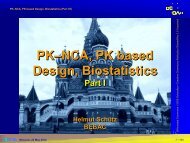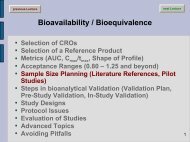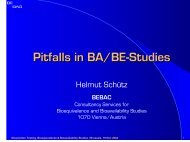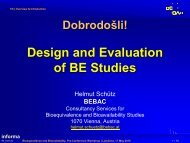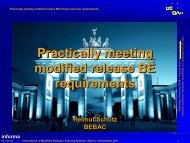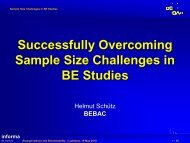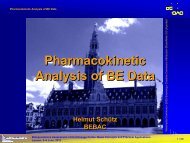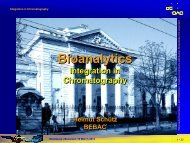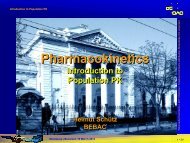Considerations for planning and designing a bioequivalence (BE ...
Considerations for planning and designing a bioequivalence (BE ...
Considerations for planning and designing a bioequivalence (BE ...
Create successful ePaper yourself
Turn your PDF publications into a flip-book with our unique Google optimized e-Paper software.
Protocol development<br />
Since in vivo <strong>BE</strong> relies on ‘rich’ PK data:<br />
Sufficient number of blood samples (C max !) / urine<br />
collection periods<br />
Sampling long enough to cover ≥80 % of AUC ∞<br />
Wash-out ≥3× t ½ (recomm. ≥5× t ½ )<br />
Saturation phase long enough to reach<br />
steady-state: ≥5× t ½ (recomm. ≥7× t ½ )<br />
Pre-dose samples (carry-over,<br />
compliance)<br />
New NewNfG: NfG: <strong>for</strong> <strong>for</strong>IRIR <strong>for</strong>mulations<br />
no nomore sampling beyond beyond<br />
72 72hours.<br />
Dissolution Testing, Bioequivalence <strong>and</strong> Bioavailability Strategies<br />
es | London, 27 June 2008 12 • 36





